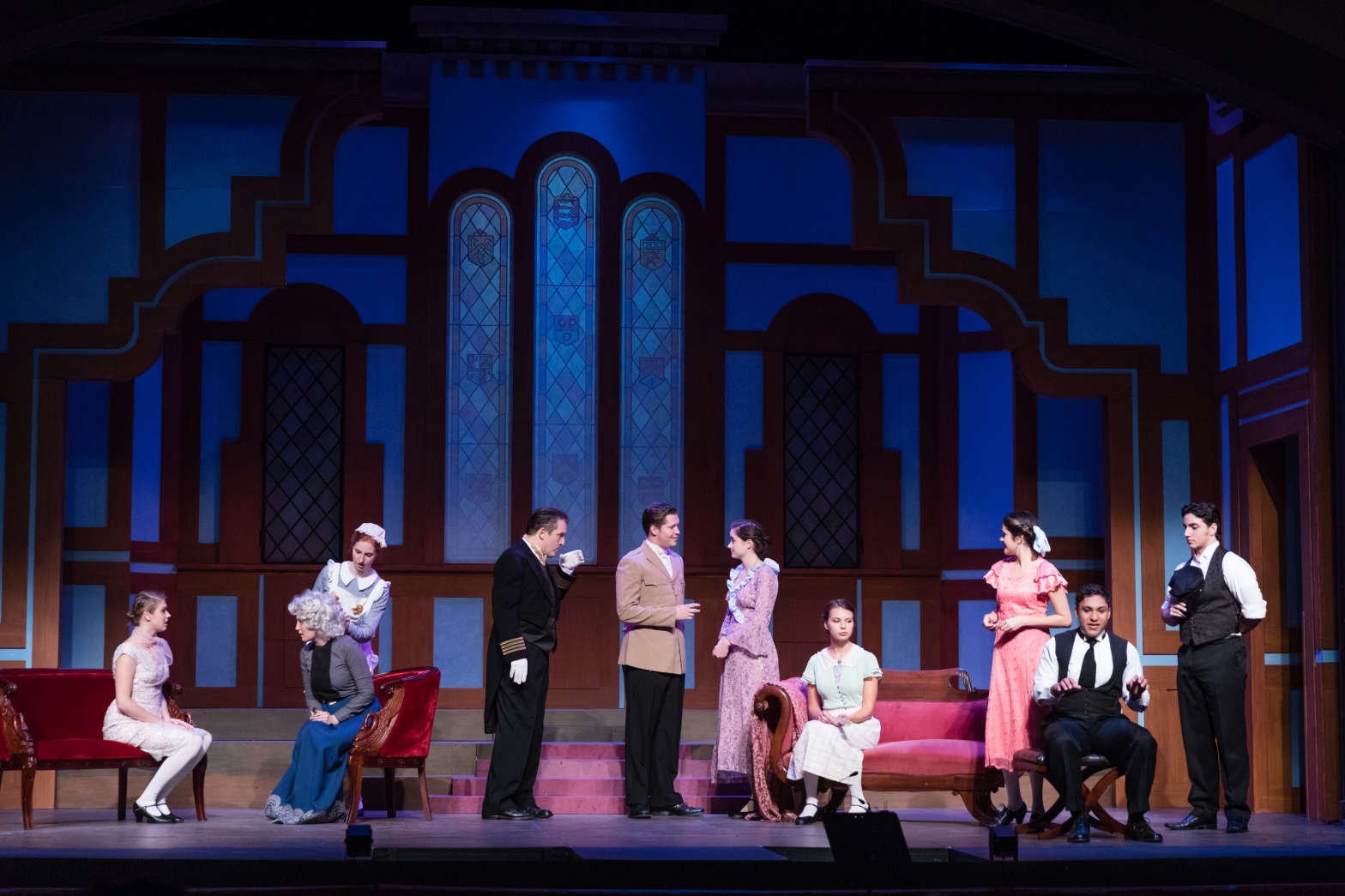Full Deck ranks highly among my favorite status games. You’ll want to invest in an oversized pack of playing cards (like these) if you’re performing in a larger space as a lot of the fun comes from the audience being able to see the shuffled cards along with the players.
The Basics
Before the scene, a deck of cards is shuffled and distributed equally between the players. (A team of four works well, with each actor getting approximately a quarter of the pack). Players hold their cards so that they can’t see the revealed card but so that other players (and the audience) can. During the scene, characters endow and treat each other according to the status of the cards being displayed – an ace denotes that a character is currently the highest status, a two that they are the lowest, and everything else is in between. During the scene, players should occasionally draw a new face card so that a new one is displayed, thereby upending previously established status configurations and relationships.
Example
The cards are split amongst the four players – A through D, respectively – and a high school teachers’ lounge serves as the initial impetus. Player A (a “jack”) and Player B (a “four”) enter the space while revealing their cards to their partner and the audience.
Player B: (assuming the role of the principal and endowing A as a very competent new hire) “I just wanted to check in with you over a coffee now that your first week of classes is in the books!”
Player A: (a little annoyed and unimpressed by the gesture) “That’s kind of you. I take mine black with two sugars.”
Player A takes a chair while B accepts the offer to make their coffee.
Player B: “There’s no cause to worry. I’m hearing good things about you… although we can all find room for improvement…”
Player C, a student (and displaying a “two”), pops their head into the room to a cold reception.
Player C: (to the principal) “Ms. McIntire sent me to get you. There’s an incident on the tennis court.”
Player B defers to Player A.
Player A: “Can’t you see that Jo is making my coffee? Ms. McIntire is more than capable of handling a little fuss, surely.”
Player C scurries off to deliver the message. Having made the coffees, Player B shuffles their cards to reveal a “ten” and goes to sit beside A.
Player A: (assuming a gentler tone and taking the drink). “Thanks for this, really. I’m not sure if I would have made it through this week without you. Those lesson plan tips were so helpful…”
The Focus
This game playfully demonstrates the ever shifting and contingent nature of status.
Traps and Tips
1.) Make sure everyone can see your cards. This is an obvious but critical pointer. It’s advisable to hold your deck prominently throughout the scene so that other players and the audience don’t strain to determine your current status position. I find everyone will quickly accept that one hand becomes assigned to this task while the other engages in traditional improv space object and gestural choices. Player C’s entrance, for example, will land more dynamically if everyone quickly knows their position and so they can react accordingly.
2.) Make sure you’re paying attention to others’ cards. As noted in my status observations elsewhere, status works best when it is endowed and bestowed rather than doggedly demanded. The card dynamic necessitates this approach as players can’t see their own place in the hierarchy. So, focus rigorously on adjusting and justifying how you treat your fellow characters as there’s nothing quite so disconcerting for the audience as watching the cards change but not the characters holding them. Player A needs to treat their “ten” principal differently than their “four” principal and justify why.
3.) Make sure you’re paying attention to others’ endowments. The other side of the above coin is that while you’re sending status signals and clues (hopefully without merely naming everyone’s place in the pecking order), you should also strive to actively receive status nudges sent your way. A lot of the energy of the scene stems from leaning into status assumptions – or just making brave assertions and offers in general – and then experiencing the fallout (or full embrace) from the other characters on stage. When Player B accepts A’s gift of making coffee, they’re also opening the door to an unexpected work dynamic, which can, in turn, steer the scene into unique territory.
4.) Make sure each new status configuration gets its moment. While a major contract of this game is that characters will swap out their revealed card, thus causing status inversions and complications, hectic, overly frequent, or ill-timed card reveals will tend to add little more than chaos and split focus. Be generous. Take turns. Don’t change your card haphazardly or out of desperation. If you’re playing a regular short-form scene with a four-person team, everyone should probably get about three shuffles. Entrances and re-entrances provide rich moments for this mischief as your character should ideally already be in focus. (In the above example, Player C is now situated for fun “new card” pop-ins with appropriate reactions.) Moments of decision or epiphany are also effective opportunities for a card shift. The game runs smoother when players look to set up good moments for each other to undergo a shift rather than just focus on their individual needs or game. Arguably, that’s just good improv etiquette in general.
In Performance
Craft playful and dynamic relationships and scenarios that can become heightened by shifting status and then let the card chaos gently unfold!
Cheers, David Charles.
www.improvdr.com
Join my Facebook group here.
Photo Credit: Scott Cook
© 2024 David Charles/ImprovDr
Game Library Expansion Pack I
